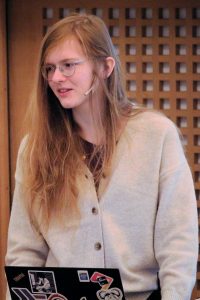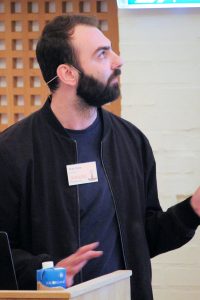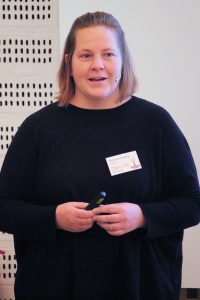This week, the focus is on the use of tools and interfaces in applications. Mark Wolfson from BIG integrates data from 1,000 retailers to provide business intelligence to both the retailers and manufacturers. Over the last couple of years, Mark has migrated his application from IBM APL2 to Dyalog APL. He tells the story of how Dyalog’s tools and features (including SQAPL, Jarvis, HttpCommand, .NET integration, ⎕JSON, and ⎕CSV) have enabled BIG to respond to customer needs faster and more flexibly than ever before.
Kai Jaeger has a long history of developing tools and utilities for Dyalog APL. He is also the main developer of the new Tatin Package Manager. In addition to developing the package manager itself, he has been working on moving his tools and small “APL-cations” to Tatin and GitHub, where Kai is now responsible for 90% of the existing packages. His presentation also briefly introduces several new packages and recent enhancements to existing tools.
Following immediately after Kai, I attempted to demonstrate how much easier packages can make your life by creating a small APL application within the new Cider project management system, using one Tatin package and one NuGet package. The Tatin package is Dyalog’s HTTP Client utility, HttpCommand (a rough equivalent of cURL), which is used to retrieve data from the web, and the NuGet package is MailKit, which reads e-mail using the POP3 protocol.
The new .NET eco-system is a potential source of many very useful packages that will work in the same way under Microsoft Windows, Linux, and macOS. Modern .NET APIs make widespread use of generic classes and methods, which means that they work the same way with different data types. Although this is how we have always worked in APL, Dyalog’s .NET bridge assumes that .NET expects specific data types. In his “Part 2” talk, John presents his thoughts on how Dyalog can embrace .NET generics.
The final two talks this week are about potential future packages. First, Josh David takes a look at open-source statistical libraries available to the APL developer, including KokoStats and TamStat. Rich Park follows with a demonstration of a simple interface for producing graphs from APL data using Vega-lite, a declarative language for describing visual presentations using JSON. Charts are rendered using a JavaScript library and, thanks to the HTMLRenderer, data can be provided directly from APL to produce graphics ready for publication on the web.
It’s great to see that the APL ecosystem is not only alive and well, but expanding!
——————————————
This week’s videos:
- U02: Transforming and Streamlining a Complex Development Process using Dyalog (Mark Wolfson)
- U03: The Evolution of APLTree and APL-cation (Kai Jaeger)
- D08: Using Packages (Morten Kromberg)
- D12: Dyalog Version 20.0 – Part 2 (John Daintree)
- D16: Statistical Libraries for Dyalog (Josh David)
- D18: Vega Charts with Dyalog (Rich Park)
Materials for all presentations can be downloaded from the Dyalog ’23 webpage.


 Follow
Follow

